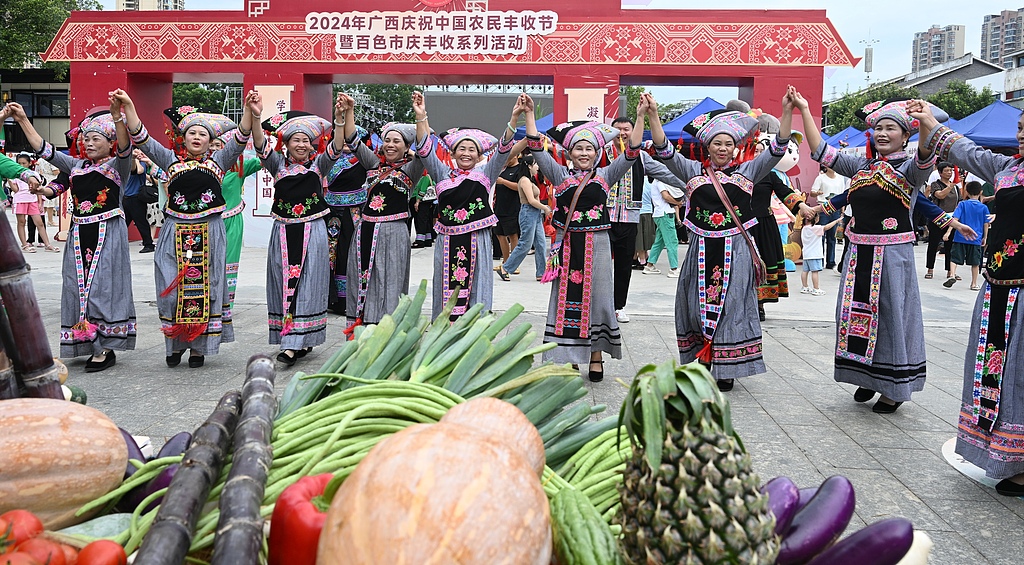China Celebrates Seventh Chinese Farmers’ Harvest Festival

Beijing, The Gulf Observer: On September 22, China marked the seventh Chinese Farmers’ Harvest Festival with vibrant celebrations held across the nation, highlighting the country’s agricultural achievements and rural vitality.
In Weihai, located in east China’s Shandong Province, the main event took place in Wenquan Town, where festivities began with the rhythmic songs of local fishermen. Representatives from Shandong’s 16 cities showcased traditional village songs, colorful float parades, and other lively performances. The celebration also featured a farmers’ market, offering a variety of regional specialties.
In Zhenjiang City, east China’s Jiangsu Province, the festival kicked off two days earlier with a bustling agricultural market. Visitors enjoyed an array of local products, including grapes, tea pastries, beef jerky, and flowers, while vendors highlighted the distinct flavors and benefits of their offerings.
Meanwhile, in Heshan City, south China’s Guangdong Province, a grand fire dragon dance captivated onlookers. Over 100 young performers paraded through the village, as the community came together to pray for favorable weather and a bountiful harvest.
Since its inception in 2018, the Chinese Farmers’ Harvest Festival, set on the autumnal equinox, has been the first national holiday dedicated to farmers. This year’s celebrations not only showcased rural culture but also aimed to invigorate markets and promote consumer spending, according to the Ministry of Agriculture and Rural Affairs.
Recent data from the National Bureau of Statistics reveals China’s consistent achievements in agriculture. Since surpassing 650 million tonnes of grain output in 2015, the country has maintained steady production levels. By 2023, per capita grain output had reached 493 kilograms, surpassing the global average for several consecutive years.
China’s agricultural strategy has evolved, focusing on both quantity and quality. The country has developed over 66.7 million hectares of high-standard farmland, with mechanization rates exceeding 73% for crop planting and harvesting. Wheat production is almost fully mechanized, while the mechanization rates for corn and rice exceed 80%.
The nation continues to invest in agricultural infrastructure, including irrigation systems and disaster prevention technologies, to secure food supplies. Significant advancements in agricultural technology have further enhanced productivity and efficiency in the sector.
Liu Shouying, dean of the School of Economics at Renmin University of China, emphasized the importance of modernizing agriculture alongside China’s broader modernization efforts. Liu called for greater integration of urban and rural economies, with a focus on improving employment opportunities and public services for farmers relocating to cities. He also advocated for the expansion of the “One County, One Industry” initiative, encouraging counties to leverage their unique resources to develop large-scale, leading industries.
Liu underscored the need to increase the complexity of agricultural products by enhancing their cultural value and transforming traditional goods into premium specialties, which would boost their market value and contribute to rural economic growth.
This year’s festival not only celebrates the harvest but also underscores China’s commitment to agricultural modernization and rural revitalization.


